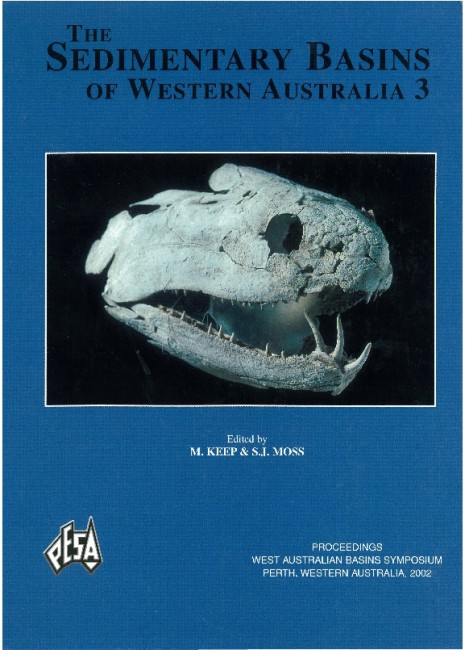Publication Name: The Sedimentary Basins of WA
Authors: S. He & M. Middleton
Publication Volume: 3
Date Published: December 2002
Number of Pages: 36
Reference Type: Book Section
Abstract:
A deep overpressured system occurs in the thick Jurassic sequence, and parts of the Cretaceous BarrowGroup of the Barrow Sub-basin. This has been confirmedby repeat formation tests and drill stem tests which revealexcess pressures ranging from 24 MPa to 28 MPa at depths between 3100-3650 m. The overpressured system is
coincident with an increase in mud weights, as well as high sonic transit times and low formation resistivities in finegrained rocks over depths between 2650-4650 m. The data suggest that a top pressure sealing zone (pressure transition zone) may exist, comprising lithologies with 60-80 % claystone and siltstone, with permeabilities of 1 Q-19 -1 o-22 m2 (lQ-4-lQ-7 md). Basin modelling indicates (1) that excess pressure was generated during the Jurassic and Cretaceous, and (2) that most of the porosity in the Jurassic source rocks has been lost through compaction, and pressure cells have been formed and there have been low sedimentation rates since the Cainozoic.
Three additional models were developed to investigate the conditions required to maintain overpressure. This modelling was based on a well-known diHUsion approximation fur pressure behaviour in porous media. The results indicated (1) that the present-day overpressure would be returned to hydrostatic pressure in about 100,000 years assuming a Jurassic shale interval of3000 m thickness with an average permeability of lQ-20 m2 (lQ-5 md), and (2) that most of the initial excess pressure would be lost after only 2 million years if the average
permeability was in the vicinity of lQ-22 m2 (lQ-7 md). This modelling suggests that the present deep overpressure is unlikely to be preserved overpressure generated by compaction disequilibrium in the geological past.
The present-day observed overpressured zone (2650- 4650 m) is not associated with a significant porosity anomaly due to compaction disequilibrium. Rather, the association of overpressured zones and vitrinite reflectance values of 0.8-2.2%, and an increased volume of gasgenerating organic matter, implies hydrocarbon generation, especially gas generation, within sealed conditions is the cause of sustained deep overpressure since the Cainozoic.


